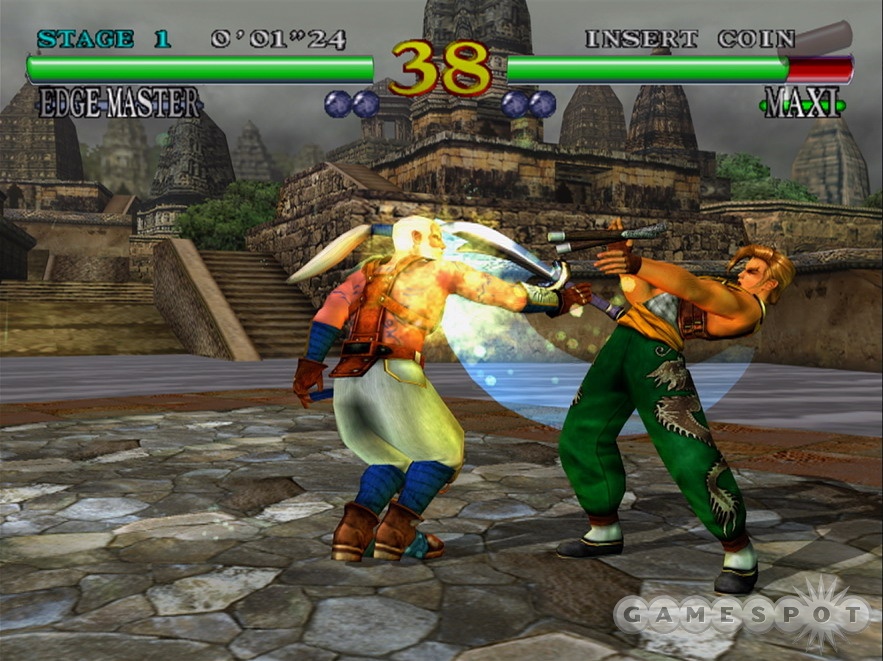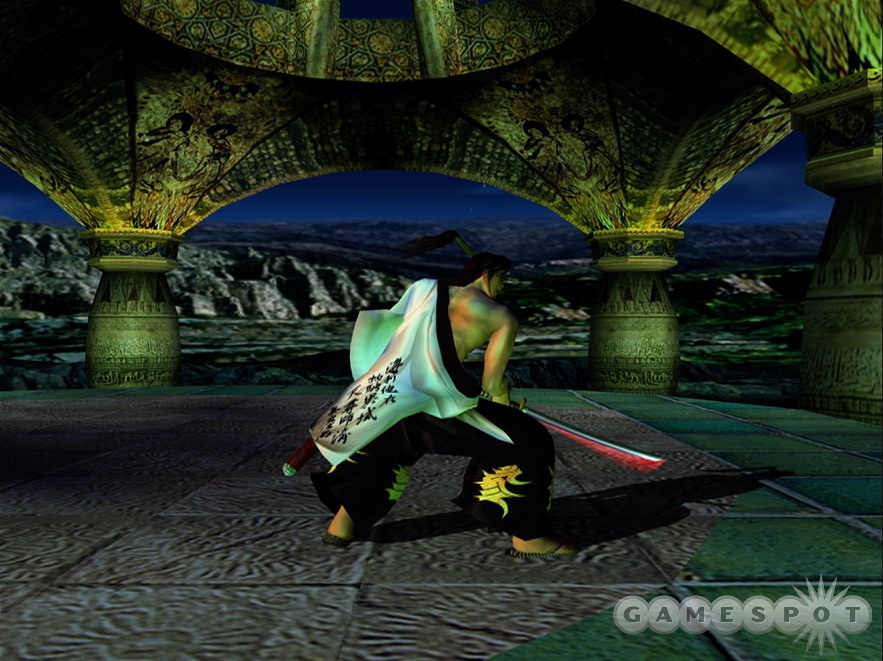Soulcalibur first wowed arcade-goers with its impressive 3D visuals and sublime head-to-head combat in 1998. The following year, a Dreamcast version packed with new features was released and quickly became a best-seller on Sega's fledgling console. Soulcalibur has since spawned a couple of sequels (the third is scheduled for release later this month) and an adventure game spin-off, but the Dreamcast game is arguably still the pick of the bunch and should be a no-brainer now that a version of it is available on Xbox Live Arcade for 800 points ($10). It's not quite that simple, though, because while Soulcalibur's gameplay has survived the transition intact, the same unfortunately can't be said for all of its gameplay modes.

Specifically, the XBLA version of Soulcalibur lacks the Dreamcast game's Battle Mission mode, which was easily the most significant and inventive addition made to the arcade game for the console release. There's no point dwelling on features that didn't make the cut in the context of this review, but for those of you unfamiliar with Battle Mission mode, it was composed of challenges that built upon the regular one-on-one formula by adding gusts of wind, quicksand, dangerous rats, and other hazards. Needless to say, its omission is disappointing.
In the Dreamcast game, playing through Battle Mission mode served as a tutorial of sorts and was the only way to unlock over 300 pieces of art in a gallery, some of which would in turn unlock new character profiles and gameplay options. All of the unlockable content is still present in the XBLA game, but it's available from the outset, which makes it much less compelling. Also available from the outset are all 19 of the characters on Soulcalibur's roster, several of whom needed to be unlocked before you could play as them originally.
Soulcalibur's fighters are a varied bunch. The requisite samurai, ninja, and martial artist character archetypes are all accounted for, and do battle with more unusual combatants that include a lizardman, a powerful golem, a European knight, a pirate, and the mysterious warrior Yoshimitsu--perhaps best known as a character from the Tekken series in which he's also a regular. Even characters with seemingly similar fighting styles and controls play differently because, unlike their counterparts in most other fighting games, they're armed with axes, nunchaku, staffs, and a veritable collection of different swords. You don't get to choose weapons with different properties as you could in subsequent games (and in Soul Blade before them), but there's plenty of variety here, and you're sure to find at least a handful of characters that you like to play.
Gameplay modes in Soulcalibur include Arcade, Vs Battle, Team Battle, Time Attack, Survival, and Extra Survival, most of which will be self-explanatory if you're at all familiar with the fighting genre. Extra Survival mode is a little unusual; it challenges you to beat as many opponents consecutively as possible in the same way that the garden-variety Survival mode does, but every battle is won by the first combatant to land a blow. Be quick, be good at blocking, or don't bother. Online leaderboards for the Survival, Extra Survival, and Time Attack modes are a good way to see how your skills stack up against those of other players around the world. They're not nearly as compelling as competitive online play would have been, though, and it's unfortunate that Soulcalibur shows its age in this regard when the rest of the game has stood the test of time so well.

The controls are accessible and responsive. The Japanese voice work for the characters, the English-language announcer, and the tunes specific to each of the different-shaped stages that you fight sound good. And the original 480p visuals have been reworked just enough that they look decent on a modern 1080p setup. There's no option to play in widescreen, though, so if you play on a widescreen display you're stuck with unsightly borders on either side of the playing area.
Since it lacks the Battle Mission mode the Xbox Live Arcade version of Soulcalibur is inferior to the Dreamcast game and, at least where online features are concerned, it's inferior to other XBLA fighters such as Street Fighter II' Hyper Fighting and Ultimate Mortal Kombat 3. Soulcalibur is still an extremely good fighting game, though, and provided you have a friend to play it with on your couch, it'll certainly keep you entertained until Soulcalibur IV arrives in stores.